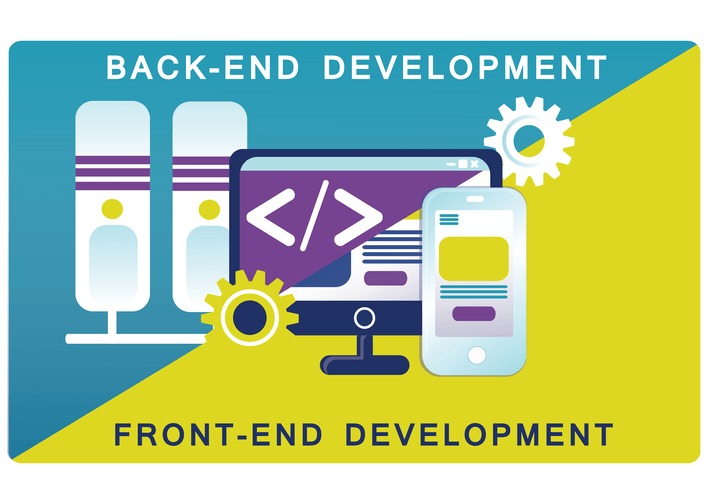This stage includes the development of detailed designs that brings initial design work into a completed form of specifications. This work includes the specification of interfaces between the system and its intended environment, and a comprehensive evaluation of the systems logistical, maintenance and support requirements. The detail design and development is responsible for producing the product, process and material specifications and may result in substantial changes to the development specification. Systems analysis and design (SAD) can be considered a meta-development activity, which serves to set the stage and bound the problem. SAD interacts with distributed enterprise architecture, enterprise I.T. Architecture, and business architecture, and relies heavily on concepts such as partitioning, interfaces, personae and roles, and deployment/operational modeling to arrive at a high-level system description.

The requirements phase should include verifying that the assumptions made are true by trying the load of very small amounts of data. SDLC products from software vendors promise organizational clarity, modern process development procedures, legacy application strategies, and improved security features. Vendors such as Oracle, Airbrake, and Veracode provide software development solutions in their complete enterprise software offerings. Many of these vendors also have a strong focus on identifying and de-bugging systems that may support the process of testing in software development life cycles. In many cases, SDLC teams utilize a variety of software solutions to support the varying stages. For example, requirements may be gathered, tracked and managed in one solution while testing use cases may take place in a completely different solution.
System Development Life Cycle US Guide
It can also include adding new features or functionality to a current product. Operations refer to the day-to-day running of a software product or service, such as performing backups and other administrative tasks. The waterfall model arranges all the phases sequentially so that each new phase depends on the outcome of the previous phase.
In other words, the team should determine the feasibility of the project and how they can implement the project successfully with the lowest risk in mind. This article will explain how SDLC works, dive deeper in each of the phases, and provide you with examples to get a better understanding of each phase. When teams have clarity into the work getting done, there’s no telling how much more they can accomplish in the same amount of time.
Stage 5: Implement
RAD focuses on quickly building a working model of the software or system, getting feedback from users, and updating the working model. After several iterations of development, a final version is developed and implemented. Let’s walk through the four phases in the RAD model as depicted in Fig. The software development lifecycle addresses only the development and testing of software components. On the other hand, system development is a broader superset involving the setup and management of the software, hardware, people, and processes that can make up a system.
- Some methods work better for specific kinds of projects, but in the final analysis, the most crucial factor for the success of a project may be how closely the particular plan was followed.
- Let’s walk through the four key elements of a Scrum model as depicted in Fig 10.4.
- Take a look at our top 10 best practices for software testing projects for more information.
- Empower your people to go above and beyond with a flexible platform designed to match the needs of your team — and adapt as those needs change.
- The project manager is responsible for executing and closing all the linear steps of planning, building, and maintaining the new or improved system throughout the process.
- Following each phase of a system development life cycle the team and project manager may establish a baseline or milestones in the process.
- The team will build functionality for the product or service, which includes creating a user interface and building the database so users can store information in your system.
Each SDLC model offers a unique process for your team’s various project challenges. The project’s specifications and intended results significantly influence which model to use. For example, the waterfall model works best for projects where your team has no or limited access to customers to provide constant feedback.
What is the system development life cycle?
The agile model is relatively well-known, particularly in the software development industry. Their output may be closer or farther from what the client eventually realizes they desire. It’s mostly used for smaller projects systems development life cycle process and experimental life cycles designed to inform other projects in the same company. But in theory, it illuminates the shortcomings of the main waterfall model by preventing larger bugs from spiraling out of control.

The term was coined in the year 2001 when the Agile Manifesto was formulated. However, unlike traditional software development that addresses security as a separate stage, SDLC addresses security every step of the way through DevSecOps practices. Application performance monitoring (APM) tools can be used in a development, QA, and production environment. This keeps everyone using the same toolset across the entire development lifecycle. The document sets expectations and defines common goals that aid in project planning. The team estimates costs, creates a schedule, and has a detailed plan to achieve their goals.
Significance of System Design
In traditional software development, security testing was a separate process from the software development lifecycle (SDLC). The security team discovered security flaws only after they had built the software. This led to a high number of bugs that remained hidden as well as increased security risks. A software development lifecycle (SDLC) model conceptually presents SDLC in an organized fashion to help organizations implement it. Different models arrange the SDLC phases in varying chronological order to optimize the development cycle. The planning phase typically includes tasks like cost-benefit analysis, scheduling, resource estimation, and allocation.

With the vision of meeting the customers’ needs, the bank has requested your services to examine the current system and to come up with solutions or recommendations of how the current system can be provided to meet its needs.
1.3 Waterfall
The third theme includes ways to determine the processes (actions) necessary to produce the results as defined by the requirements of the system. Each stage has a separate project plan and takes information from the previous stage to avoid similar issues (if encountered). However, it is vulnerable to early delays and can lead to big problems arising for development teams later down the road.
Software developers use this as a guide to ensure software is produced with the lowest cost and highest possible quality in the shortest amount of time. Today, most teams recognize that security is an integral part of the software development lifecycle. You can address security in SDLC following DevSecOps practices and conducting security assessments during the entire SDLC process.
Stages and Best Practices
SDLC models can therefore help projects to iterate and improve upon themselves over and over until essentially perfect. Theoretically, this model helps teams to address small issues as they arise rather than missing them until later, more complex stages of a project. The agile methodology prioritizes fast and ongoing release cycles, utilizing small but incremental changes between releases. This results in more iterations and many more tests compared to other models. The Big Bang model is incredibly flexible and doesn’t follow a rigorous process or procedure.
